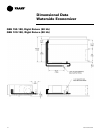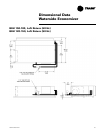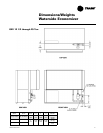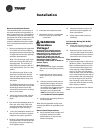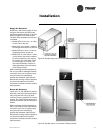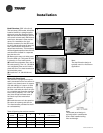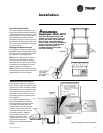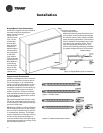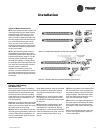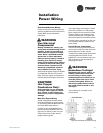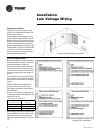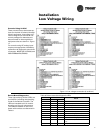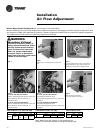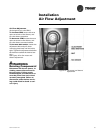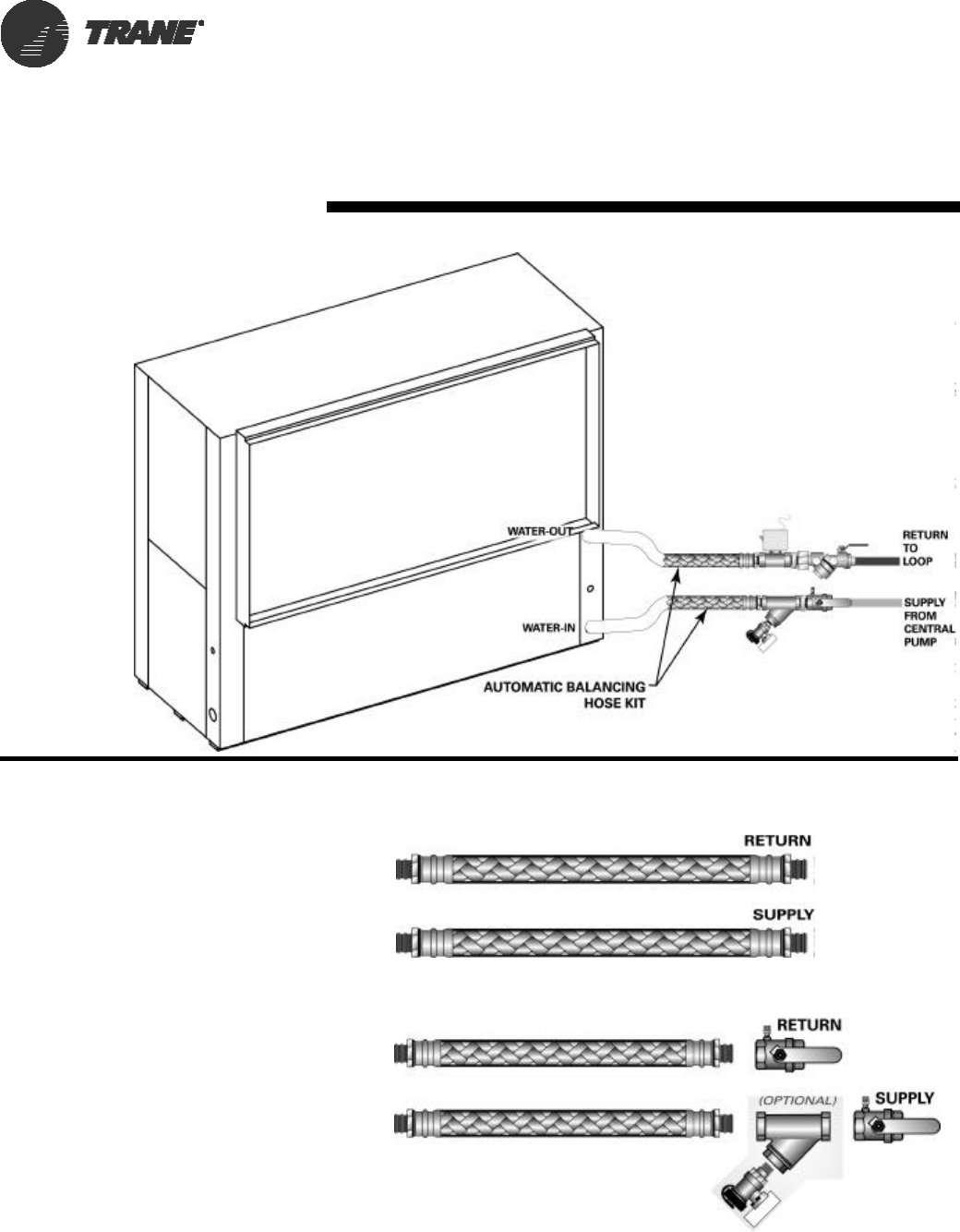
52 WSHP-SVX01D-EN
Supply/Return Pipe Connections
Connect the supply and return hoses to
the water-inlet (from supply) and
water-outlet (to return)
of the unit. For
vibration isola-
tion, it is rec-
ommended
that flexible
steel braided
hoses be in-
stalled instead
of hard piping
the equipment
to the main
loop system.
Figure 7 shows
connection of a
Hays Measurf-
lo balancing
hose kit to the
water-in and
water-out of a
vertical unit.
Types of Hose Connections
Whether installing the units in a central
pump (main/auxiliary pump for the en-
tire zone) design, or as a distributed
pump (1-pump per unit) design, a shut-
off device and flexible hose is recom-
mended to transition from the hard pip-
ing of the closed or open loop water
system to the unit. There are multiple
hose combinations which may be used
to fit the design or specification criteria
for the installation.
(1) A steel braided hose without a shut-
off device is the least expensive means
of connecting the heat pump to the sup-
ply/return water loop.
(2) With the addition of a shut-off device
on the supply and return of the system,
the unit may be isolated during service
or maintenance situation. This system
may be installed as a wide open (full wa-
ter flow to the equipment) design, or
manually balanced by utilizing the pres-
sure/temperature ports on the top of the
ball valve/shut-off device.
Installation
Option 1: Flexible hoses
Option 2: Flexible hoses with ball valves
Note:
The Figure 7 example
incorporates the Hays
Measurflo balancing hose kit and a 2-posi-
tion isolation valve into the system design.
An isolation valve is often used in variable
speed pumping applications. The isolation
valve is designed to stop water flow to the
unit during non operation times. This al-
lows the loop water pumps to run only
when a requirement for pumping is needed
for greater energy efficiency of the overall
system design.
Figure 7: Supply/Return pipe connections



